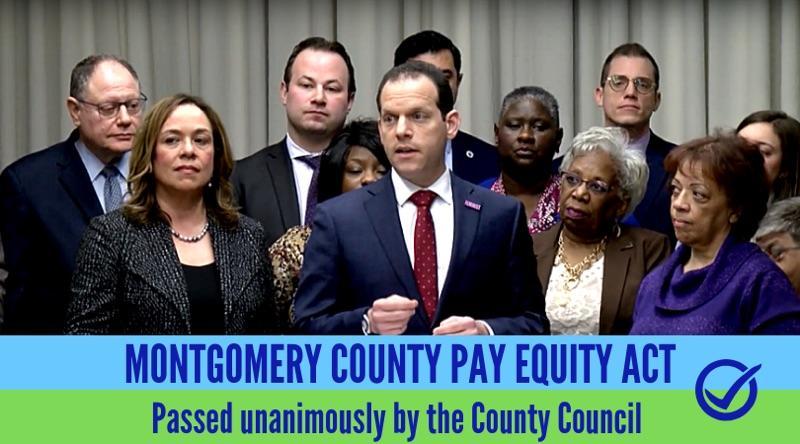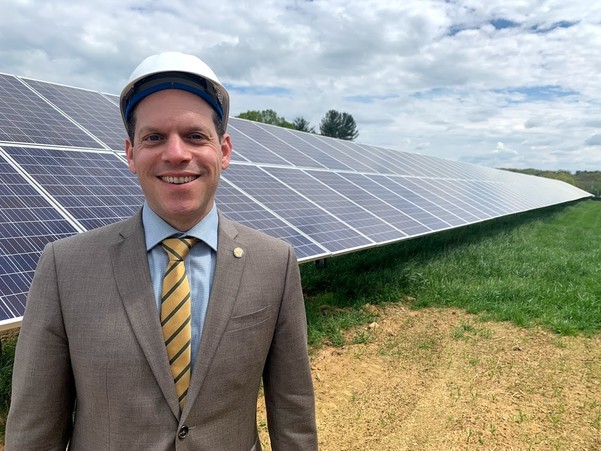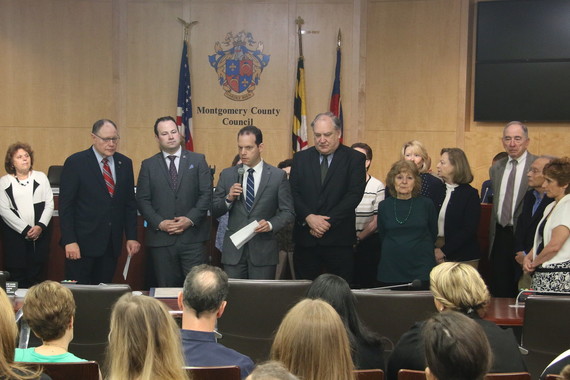|
My first bill, the Montgomery County Pay Equity Act, was unanimously passed by the County Council and now goes to the County Executive for his signature. Under this law, Montgomery County government will no longer request pay stubs or pay history when determining an employee’s salary.
Being raised by a single mom who worked multiple jobs, this legislation is very personal to me. By eliminating the county’s use of pay history to set future salaries, employees will get paid according to their expected responsibilities and the experience they bring to the table, rather than their ability to successfully negotiate based on past wages. It’s long overdue for us to eliminate the stark pay gap that exists between genders in the same grade levels within our county government.

For the past month, my colleagues and I have been hard at work deliberating over the $5.7 billion FY20 operating budget that funds services such as health care, transportation, environmental protections, schools and other key programs that keep our county running.
One of the leading indicators of social mobility is access to reliable transportation. That is why one of my top priorities during this budget cycle is to ensure that young people have expanded and free access to our regions bus services. For many individuals –– and especially for youth working minimum wage jobs –– paying for bus service cuts heavily into their paychecks and makes public transportation an unaffordable option.
Currently, Montgomery County’s “Kids Ride Free” program, which provides free service for every Ride On bus and 24 Metrobus routes to middle and high school students, is only available 2 p.m. - 8 p.m. on weekdays. For many of our students, these hours are too restrictive.
In an effort to provide more transportation options for young people, it is imperative that we expand the “Kids Ride Free” program to all Montgomery County youth under the age of 18 at all times.

On Earth Day, I attended the official opening of a new solar field at the National Institute for Standards and Technology (NIST) in Gaithersburg. Located directly on site, the solar panels occupy the space of 11 football fields and will save the federal agency an estimated $3.5 million dollars in energy costs. This new solar field is the largest found on any federal agency campus outside of the Department of Energy and provides more solar energy than all the existing solar panels on NIST’s campus combined.
The public sector partnered with the private sector to deliver an efficient, long-term, renewable source of energy. As the U.S. government continues moving toward sustainability, Montgomery County must follow this lead and set the standard for other localities in the future.

I had the opportunity to present a Historic Preservation award to Miche Booz and Emmett Van Riper of Miche Booz Architect for their work in exterior restoration and adaptive reuse of Hammer Hill, an 1890s Queen Anne-style house on the corner of the Frederick and Stringtown Roads in Clarksburg.
This project not only saved an important but endangered historic building, it restored the appearance that made it a unique contributor to the beauty of the Historic District and rendered it suitable for new use to the benefit of the whole community. The exterior pays homage to its former elegant appearance and the interior now serves as medical office suites to support the expanding community in Clarksburg.
I joined my colleagues in recognizing Holocaust Remembrance Day by presenting a council proclamation honoring Montgomery County survivors and their family members.
The Nazi’s divided the world, as well as their prisoners. For purposes of identification, Jews were instructed to wear a star of David – a double triangle. Individuals with progressive political views were instructed to wear an inverted red triangle. Members of the LGBTQ community were instructed to wear an inverted pink triangle. And prisoners of war were instructed to wear a red triangle.
My grandfather was one of those who wore a red triangle. He was a flight engineer in the Air Force, when his B-17 was shot down in enemy territory. My grandfather subsequently spent nearly 2 years as a POW at Stalag 17, where he was freed by the Russians. It was hard for my grandfather to tell his story – as it is for many survivors. But as we witness growing volumes of intolerance and hatred in the public square, we need everyone to speak up and speak out, and reminder those who are ignorant to history: never again.

Guests requesting reservations for Glenstone Museum in Potomac typically have to wait months for their free tickets. But did you know that visitors who take RideOn bus route 301 to the museum will be granted admission without advanced reservations? Route 301 runs four buses daily from the Rockville Metro Station. There are 18 seats on each bus. Buses return to the Rockville Metro Station all day until 6:06 p.m. Find the details of Route 301, here.
Glenstone is open Thursday to Sunday, 10 a.m. to 5 p.m.
Take the bus and enjoy your experience!

|